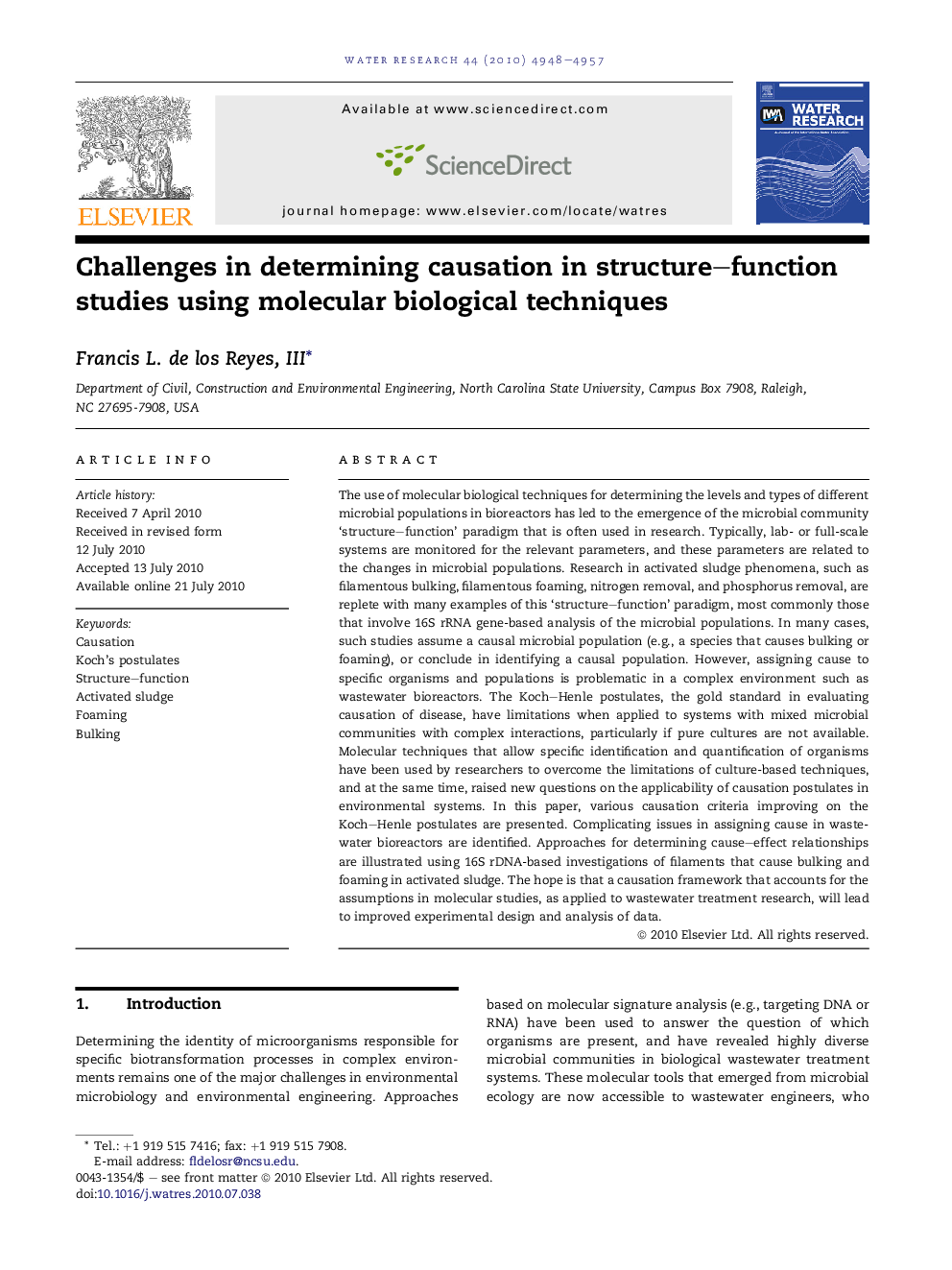| کد مقاله | کد نشریه | سال انتشار | مقاله انگلیسی | نسخه تمام متن |
|---|---|---|---|---|
| 4483549 | 1316891 | 2010 | 10 صفحه PDF | دانلود رایگان |

The use of molecular biological techniques for determining the levels and types of different microbial populations in bioreactors has led to the emergence of the microbial community ‘structure–function’ paradigm that is often used in research. Typically, lab- or full-scale systems are monitored for the relevant parameters, and these parameters are related to the changes in microbial populations. Research in activated sludge phenomena, such as filamentous bulking, filamentous foaming, nitrogen removal, and phosphorus removal, are replete with many examples of this ‘structure–function’ paradigm, most commonly those that involve 16S rRNA gene-based analysis of the microbial populations. In many cases, such studies assume a causal microbial population (e.g., a species that causes bulking or foaming), or conclude in identifying a causal population. However, assigning cause to specific organisms and populations is problematic in a complex environment such as wastewater bioreactors. The Koch–Henle postulates, the gold standard in evaluating causation of disease, have limitations when applied to systems with mixed microbial communities with complex interactions, particularly if pure cultures are not available. Molecular techniques that allow specific identification and quantification of organisms have been used by researchers to overcome the limitations of culture-based techniques, and at the same time, raised new questions on the applicability of causation postulates in environmental systems. In this paper, various causation criteria improving on the Koch–Henle postulates are presented. Complicating issues in assigning cause in wastewater bioreactors are identified. Approaches for determining cause–effect relationships are illustrated using 16S rDNA-based investigations of filaments that cause bulking and foaming in activated sludge. The hope is that a causation framework that accounts for the assumptions in molecular studies, as applied to wastewater treatment research, will lead to improved experimental design and analysis of data.
Journal: Water Research - Volume 44, Issue 17, September 2010, Pages 4948–4957